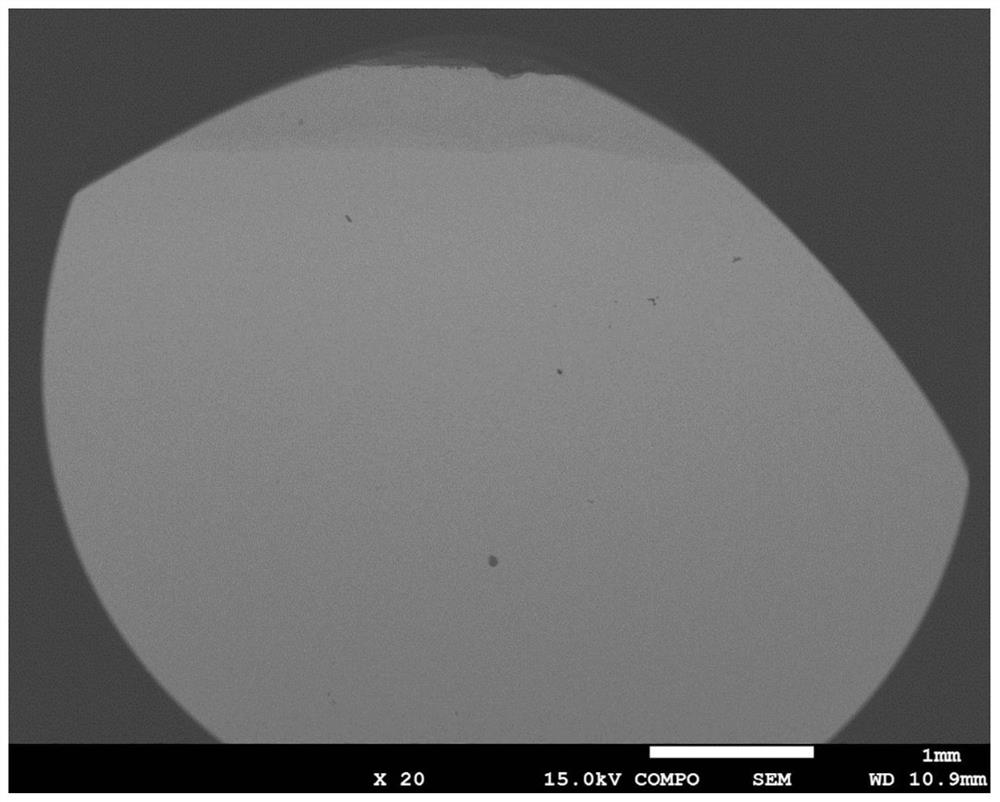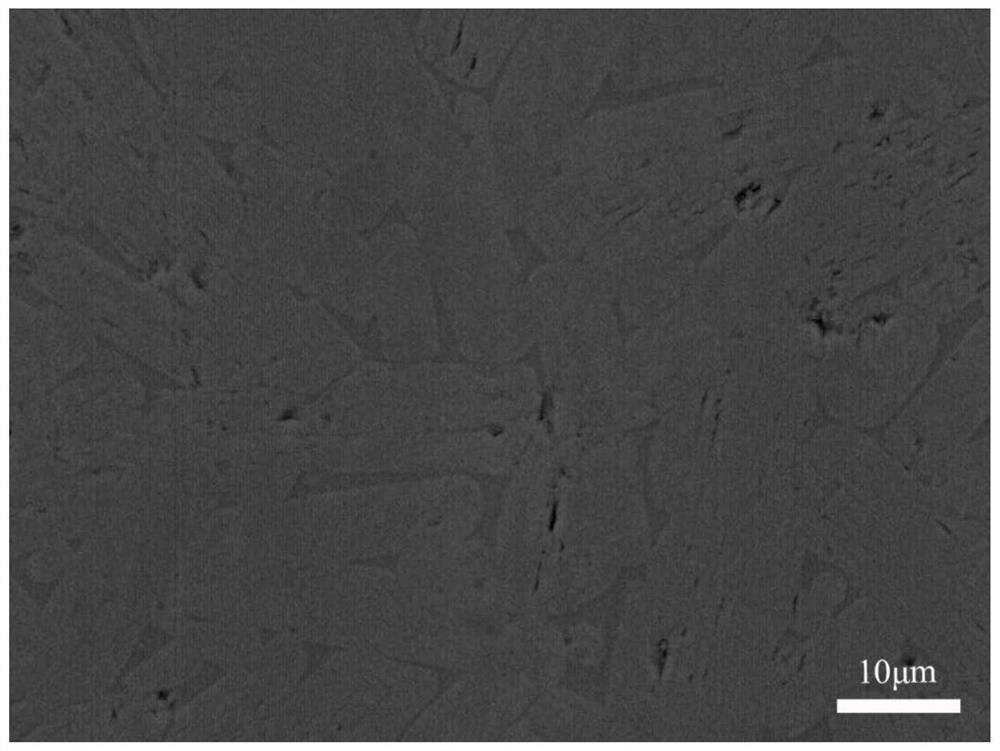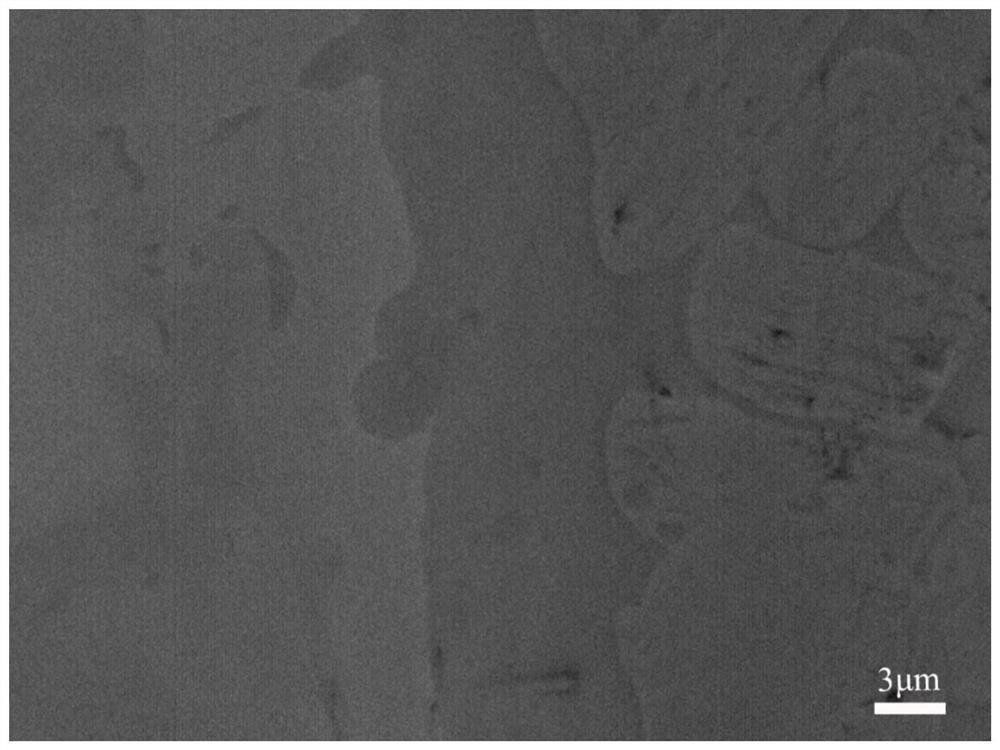In-situ generated Ti2AlC ceramic layer on surface of titanium substrate and preparation method of in-situ generated Ti2AlC ceramic layer
An in-situ generation and in-situ preparation technology, applied in the field of surface protection, can solve the problems of insufficient density of the AlC layer, low bonding force of the substrate, and thin AlC layer, so as to facilitate the transmission of mechanical properties, improve surface friction properties, Excellent self-lubricating effect
- Summary
- Abstract
- Description
- Claims
- Application Information
AI Technical Summary
Problems solved by technology
Method used
Image
Examples
Embodiment 1
[0028] Prepare 0.2mm Ti on the surface of titanium substrate 2 AlC ceramic layer. Specific steps are as follows:
[0029] (1) Weigh 23.9g of Al powder and 37.58g of TiC powder and place them in a ball mill jar, and put them into agate balls according to the ball-to-material ratio of 5:1. Put the ball mill jar on a roller ball mill and mill at a speed of 100r / min for 10h to make it evenly mixed.
[0030] (2) Sieve the ball-milled powder with an 80-mesh sieve.
[0031] (3) Lay 17.67g of titanium powder on the bottom of a mold with a diameter of 50mm to obtain a matrix with a thickness of 2mm, and perform cold pressing at a pressure of 10MPa. Then 1.46 g of sieved mixed powder was weighed, spread evenly on the surface of the matrix powder layer, and cold pressed again at 20 MPa.
[0032] (4) The sintering molding is carried out by hot pressing sintering. The specific parameters are: in a high-purity argon atmosphere, the temperature is raised to 1450°C at a heating rate of 1...
Embodiment 2
[0034] Prepare 0.9mm Ti on the surface of titanium substrate 2 AlC ceramic layer. Specific steps are as follows:
[0035] (1) Weigh 27.25g of Al powder and 37.58g of TiC powder and place them in a ball mill jar, and put them into agate balls according to the ball-to-material ratio of 3:1. Put the ball mill jar on a roller ball mill for 12 hours at a speed of 120r / min to make it evenly mixed.
[0036] (2) Sieve the ball-milled powder with an 80-mesh sieve.
[0037] (3) Lay 26.5g of titanium powder on the bottom of a mold with a diameter of 50mm to obtain a matrix with a thickness of 3mm, and perform cold pressing at a pressure of 15MPa. Then 9.95 g of sieved mixed powder was weighed, spread evenly on the surface of the base powder layer, and cold pressed again at 20 MPa.
[0038](4) The sintering molding is carried out by hot pressing sintering. The specific parameters are: in a high-purity argon atmosphere, the temperature is raised to 1450°C at a heating rate of 10°C / min...
Embodiment 3
[0040] Preparation of 0.3mm Ti on the surface of TC4 titanium alloy 2 AlC ceramic layer. Specific steps are as follows:
[0041] (1) Weigh 26g of Al powder and 26.8g of TiC powder and place them in a ball mill jar, and put them into agate balls according to the ball-to-material ratio of 5:1. Put the ball mill jar on a roller ball mill and mill at a speed of 100r / min for 10h to make it evenly mixed.
[0042] (2) Sieve the ball-milled powder with an 80-mesh sieve.
[0043] (3) Lay 88.35g of TC4 alloy powder on the bottom of a mold with a diameter of 50mm to obtain a matrix with a thickness of 10mm, and perform cold pressing at a pressure of 150MPa. Then 2.64 g of sieved mixed powder was weighed, spread evenly on the surface of the matrix powder layer, and cold pressed again at 20 MPa.
[0044] (4) The sintering molding is carried out by hot pressing sintering. The specific parameters are: in a high-purity argon atmosphere, the temperature is raised to 1450°C at a heating ra...
PUM
| Property | Measurement | Unit |
|---|---|---|
| thickness | aaaaa | aaaaa |
| thickness | aaaaa | aaaaa |
| thickness | aaaaa | aaaaa |
Abstract
Description
Claims
Application Information
 Login to View More
Login to View More - R&D
- Intellectual Property
- Life Sciences
- Materials
- Tech Scout
- Unparalleled Data Quality
- Higher Quality Content
- 60% Fewer Hallucinations
Browse by: Latest US Patents, China's latest patents, Technical Efficacy Thesaurus, Application Domain, Technology Topic, Popular Technical Reports.
© 2025 PatSnap. All rights reserved.Legal|Privacy policy|Modern Slavery Act Transparency Statement|Sitemap|About US| Contact US: help@patsnap.com



